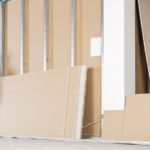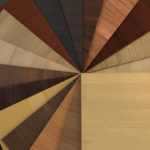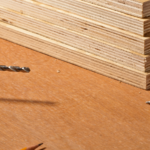How Plywood is Made: The Manufacturing Process
- January 1, 2025
Plywood is one of the most versatile and widely used engineered wood products in the world. It is a durable, cost-effective, and sustainable material used in furniture, construction, and interior design. Understanding how plywood is made helps in selecting the right type for various applications. Here’s a step-by-step breakdown of the plywood manufacturing process.
1. Selection of Timber Logs
The process begins with the selection of high-quality logs from species like eucalyptus, poplar, gurjan, and birch. These logs, also called peeler logs, are chosen based on their density, grain structure, and durability.
2. Debarking and Cutting
The selected logs are fed into a debarking machine, which removes the outer bark to create a smooth surface. After debarking, the logs are cut into standard sizes suitable for peeling.
3. Peeling and Veneer Formation
The logs are softened by soaking in hot water to make them easier to peel. They are then fed into a rotary lathe machine, which peels thin sheets of wood, known as veneers. These veneers are cut into required sizes and sorted based on their thickness and quality.
4. Drying the Veneers
The freshly peeled veneers contain moisture, which needs to be removed. They are dried using hot air dryers or by natural sun drying to bring them to the required moisture content, usually around 6-8%.
5. Glue Application and Layering
Each veneer sheet is coated with a strong adhesive (usually phenol formaldehyde or urea-formaldehyde resin). The veneers are then arranged in alternating grain directions (cross-ply layering) to enhance strength and durability.
6. Hot Pressing Process
The stacked veneers are subjected to high-temperature hot pressing, where they are compressed under extreme pressure (around 150°C) to bond the layers firmly. This process ensures the plywood achieves its structural integrity.
7. Trimming and Sanding
Once the sheets are bonded, they are trimmed to the standard dimensions (usually 8×4 feet). The plywood is then sanded to achieve a smooth surface, making it ready for finishing or lamination.
8. Quality Inspection and Grading
Each plywood sheet undergoes strict quality control tests to check for strength, durability, and uniformity. Plywood is graded based on factors such as water resistance, surface defects, and strength classification (e.g., MR, BWR, BWP grades).
9. Finishing and Dispatch
The final plywood sheets are coated with preservatives to enhance durability. Some may receive additional treatments like fire resistance, termite-proofing, or waterproofing. After finishing, they are packed and shipped to suppliers and retailers.
Final Thoughts
Plywood’s manufacturing process ensures a strong, durable, and flexible product suitable for various applications. Whether you’re choosing plywood for furniture, construction, or interiors, understanding its manufacturing process helps in selecting the right type for your needs.





